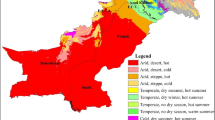Abstract
Map symbols are the promised signs to make geographic information be recognized quick and easy. With advances in GIS technologies and natural hazard models, portrayal is getting more important to massive amount of data dynamically in order to facilitate communication and proper decision making. This study aims to provide a framework to set up the portrayal for the phenomena of volcanic ash diffusion simulated by different models such as FALL3D, HYSPLIT, PUFF, and LADAS-VA. Previous researches on volcanic disaster and reports were collected and reviewed in the aspect of temporal, spatial and thematic dimensions. For integration of volcanic disaster response system, both standardization of voxel and the framework for 4-D data portrayal were designed. In order to expand the verification processes with satellite imagery for volcanic eruption, all the potential parameters were considered in the portrayal framework. For the later verification process, thematic schema includes observed one, simulated one and ensemble one. As diffusion phenomenon depends on wind field, we consider the whole-globe, the northern hemisphere, Asia realm, and a local realm, which were the product types of geostationary satellite imagery. Voxel standards were made by the groups of volcanic diffusion modelers who are involved in volcanic research program by the Ministry of National Public Safety and Security in 2015 and 2016 in order to compare the simulated results. This study may provide the portrayal framework for massive 4D-data beyond the volcanic ash diffusion model in the near future.











Similar content being viewed by others
References
Shin, J. Y., Lee, G. H., & Lee, S. L. (2010). Research on the establishment of the efficient improvement, maintenance, and development plan for the national map symbolization specification based on the cartographic principles. Journal of the Korean Cartographic Association, 10(2), 59–77.
ISO 19117:2012 http://www.iso.org/iso/iso_catalogue/catalogue_tc/catalogue_detail.htm?csnumber=46226.
Chang, E. M. (2008). Guidelines for the standardization of forest GIS Ver 2.0 (pp. 9–11). Daejeon: Korea Forest Service.
Kang, Y. O., & Kim, H. D. (2014). A study on geographic visualization of public data using Google API in cloud computing environment. Journal of the Korean Cartographic Association, 14(1), 1–15.
Kassenberg, D., & De Jong, K. (2005). Dynamic environmental modelling in GIS: 1 modelling in three spatial dimensions. International Journal of Geographical Information Science, 19(5), 559–579.
Lee, S. H., Sung, W. K., & Park, S. W. (2012). Big data, new future for science and technology. Korean Federation of Science and Technology Societies Issue Paper, 2012–03, 2–26.
Swienty, O. (2008). Attention-guiding geovisualization, a cognitive approach of designing relevant geographic information. Dissertation Paper, München University.
Honsby, K., & Egenhofer, M. (2000). Identity-based change: A foundation for spatio-temporal knowledge representation. International Journal of Geographical Information Science, 14, 207–224.
Fairbairn, D., Andrienko, G., Andrienko, N., Buziek, G., & Dykes, J. (2001). Representation with cartographic visualization. Cartography and Geographic Information Science, 28, 13–28.
Seitz S. M. & Dyer, C. R. (1997). Photorealistic Scene Reconstruction by Voxel Coloring, Proceedings of Computer Vision and Pattern Recognition Conference (CVPR 97), (pp. 1067–1073).
Lieberwirth, U. (2008). 3D GIS Voxel-Based Model Building in Archaeology, In: Posluschny, A., K. Lambers & I. Herzog (eds.) Layers of Perception. Proceedings of the 35th International Conference on Computer Applications and Quantitative Methods in Archaeology (CAA), Berlin Germany.
Gong, J., & Xia, Z. (1999). An integrated data model in three dimensional GIS. Geo-spatial Information Science, 2(1), 1–8.
Lee, J. K., Kim, J.-H., Park, H.-S., & Suk, M.-K. (2014). Development of radar-based multi-sensor quantitative precipitation estimation technique. Atmosphere, 24(3), 433–444.
Park, K., Chang, E., Park, C. P., & Choi, S. J. (2015). Analysis of service demand on geological and mine-related thematic maps and available contents in geological maps and mine maps. Journal of the Korean Cartographic Association, 15(1), 13–24.
Lake, R. (2005). The application of geography markup language (GML) to the geological sciences. Computers & Geosciences, 31, 1081–1094.
Youn J. & Kim, T. (2016). 3D visualization of volcanic ash dispersion prediction with spatial information open platform in Korea, In The International Archives of the Photogrammetry and Remote Sensing and Spatial Information Science, (Vols. XL1-B8, XXIII, pp. 185–190). Czech Republic: Plague. ISPRS Congress 12-19, July 2016.
Monmonier, M. (1997). Cartographies of danger: Mapping hazards in America. London: The University of Chicago Press Ltd.
Lee, S., Hwang, K. K., Won, C. H., & Lee, J. Y. (2016). Numerical analysis of volcanic ash dispersion using lagrangian model—Part 1. Case studies on historic eruption. The Wind Engineering Institute of Korea, 20(1), 11–18.
Yeo, J.Y, Cha, E.Y., Cho, M.H., Dini, & Kim, M.H. (2012). A study on computer programs for estimating volcanic ash spreads. Annual Conference of Korean Society of Hazard Mitigation, Gangnam University, (pp. 526–531).
Chang, E. M., & Park, K. (2016). Classification of GIS-based models according to natural hazard types. Spatial Information Research, 24(2), 103–114.
Yoo, J. S., & Shin, D. B. (2016). Utilizing urban facility sensor information in U-City: Multi-dimensional scaling approach. Spatial Information Research, 24(2), 53–64.
Acknowledgments
This research was supported by a grant [MPSS-NH-2015-81] through the Natural Hazard Mitigation Research Group funded by Ministry of Public Safety and Security of Korean government.
Author information
Authors and Affiliations
Corresponding author
Rights and permissions
About this article
Cite this article
Chang, E., Park, Y., Moon, S. et al. 4-Dimensional portrayal for volcanic ash diffusion utilizing voxel standardization in case of volcanic ash diffusion models. Spat. Inf. Res. 24, 589–598 (2016). https://doi.org/10.1007/s41324-016-0055-5
Received:
Revised:
Accepted:
Published:
Issue Date:
DOI: https://doi.org/10.1007/s41324-016-0055-5




